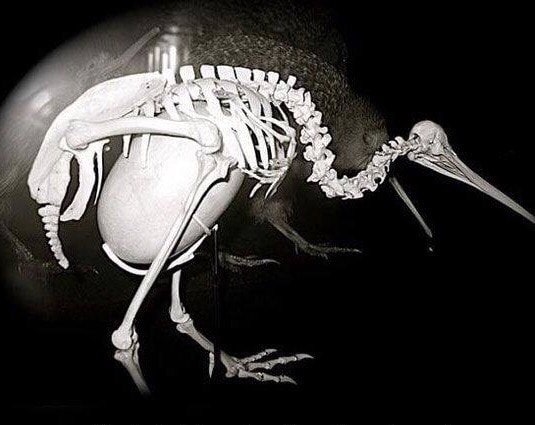Understanding the Pregnant Kiwi Bird: A Complete Guide for Curious Parents
Hello, caring parents and wildlife enthusiasts! 😊 Are you ready to embark on an exciting journey to learn all about our feathered friends, particularly the captivating kiwi bird during its pregnancy? Well, buckle up because we are about to dive deep into the peculiar and intriguing world of kiwi bird reproduction.
Introduction to Kiwi Bird Pregnancy
First things first, let’s clear up a common misconception: kiwi birds don’t actually get ‘pregnant’ in the way mammals do. Instead, female kiwi birds lay eggs that contain the kiwi chick. So, when we talk about a ‘pregnant’ kiwi bird, what we are really referring to is the pre-laying and egg incubation period. Understanding this process is essential for conserving these unique creatures, which are native to the majestic landscapes of New Zealand.
The Mating Habits of Kiwi Birds
Kiwi birds are generally monogamous creatures. This means that they find a mate and typically stick with them through thick and thin, season after season. Isn’t that romantic? The mating season occurs between June and March, with the most common period for egg-laying happening between August and November. These nocturnal birds engage in a courtship that includes mutual preening and calls that echo through the night.
From Mating to Egg Development
After a successful mating session, the female kiwi will carry the developing egg in her body for around 30 days. This egg can take up a massive amount of space inside her body – weighing up to 20% of the female’s body weight. That’s like a human giving birth to a preschooler! During this period, which is the closest equivalent to mammalian pregnancy, the female might look visibly larger and spend more time resting.
Unique Aspects of Kiwi Bird Egg Incubation
Once the egg is laid, the parenting responsibilities aren’t over. In fact, kiwi parenting takes a bit of an unconventional twist here; it’s the male kiwi bird that predominantly takes charge of the incubation period, which can last for 70-80 days – one of the longest incubation periods among birds. He will patiently sit on the egg, maintaining the warmth and safety needed to bring a new kiwi chick into the world.
Laying the Ground for a Healthy Kiwi Chick
Caring for a kiwi egg isn’t an easy feat and requires an ideal environment. Providing a habitat with the right temperature, humidity, and protection from predators is crucial for the kiwi bird’s reproduction success. Luckily, in the wild, the kiwi’s natural instincts do a fantastic job at picking the perfect breeding spots.
But it doesn’t stop at the egg. Once the little chick pecks its way out, the parents may continue to look after their offspring, showing them how to forage for food until they can venture out into the wild yonder on their own.
Conservation and Human Impact
It’s a sad truth that kiwi birds are facing the threat of extinction. Human activities, habitat destruction, and introduced predators are making life tough for our kiwi friends. Hence, understanding their reproductive cycle and challenges is a step towards helping conservation efforts and ensuring the survival of these lovely birds.

5 Essential Tips for Preparing for a Kiwi Bird Pregnancy
Welcome, wildlife-loving parents! Ready to learn some practical tips for when a kiwi bird is expecting? Let’s delve into the essentials of prepping for a kiwi bird pregnancy, which is actually the period of egg development and laying. ??
1. Understand the Kiwi Bird’s Unique Needs
Before the egg even arrives, it’s vital to be aware of what a female kiwi requires. Kiwi birds need a secure and comfortable habitat to carry their egg, which is remarkably large relative to their body size. Familiarizing yourself with their nesting preferences and natural habitat helps you appreciate the care needed for their reproduction.
2. Creating the Right Environment
Should you be fortunate enough to be involved in kiwi bird care, providing the proper environment is key. This means a quiet, undisturbed setting, plus the perfect nesting conditions—just like the ones they would choose in the wild, filled with soft materials and concealed from potential threats.
3. Knowledge of Incubation Practices
Once the egg is laid, it’s the male kiwi’s turn to shine. The males incubate the eggs, hardly ever leaving the nest. Want to support? Learn about incubation temperatures and durations to ensure the eggs are kept in conditions that mimic those vigilant daddy kiwis provide.
4. Egg Monitoring and Care
Monitoring the egg’s health is crucial. In controlled environments, the use of candling techniques to check on the chick’s development can be incredibly insightful. However, this requires a gentle touch and should be done by experienced carers to prevent causing any stress to the developing chick.
5. Post-Hatching Care
When the chick finally makes its grand entrance, having knowledge of kiwi chick diet and possible post-hatching complications prepares you to assist these vulnerable critters as they take their first steps (or pecks?) into the world.
Conclusion
Preparing for a kiwi bird’s reproductive process is a rare and special situation that calls for a good understanding of their unique needs. Remember, these beautiful birds have adapted perfectly to their environments, so emulating their natural conditions as closely as possible is the best way to ensure success. Let’s work together to secure the future for these amazing birds, unique to New Zealand’s ecosystems!
See more great Things to Do with Kids in New Zealand here. For more information see here
Disclaimer
The articles available via our website provide general information only and we strongly urge readers to exercise caution and conduct their own thorough research and fact-checking. The information presented should not be taken as absolute truth, and, to the maximum extent permitted by law, we will not be held liable for any inaccuracies or errors in the content. It is essential for individuals to independently verify and validate the information before making any decisions or taking any actions based on the articles.




